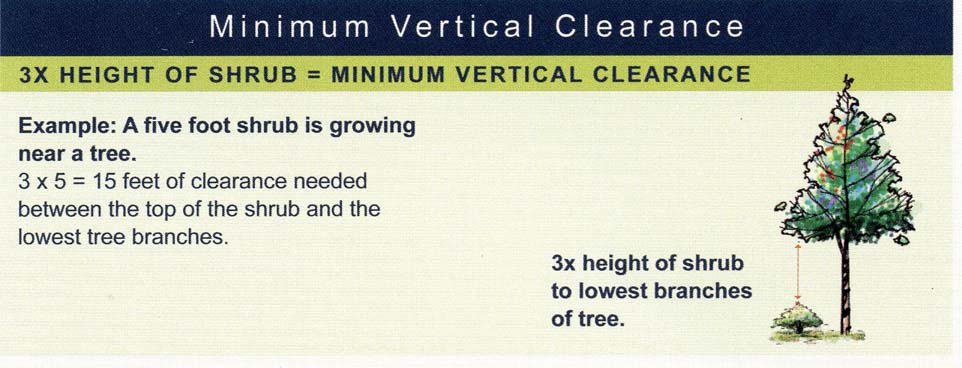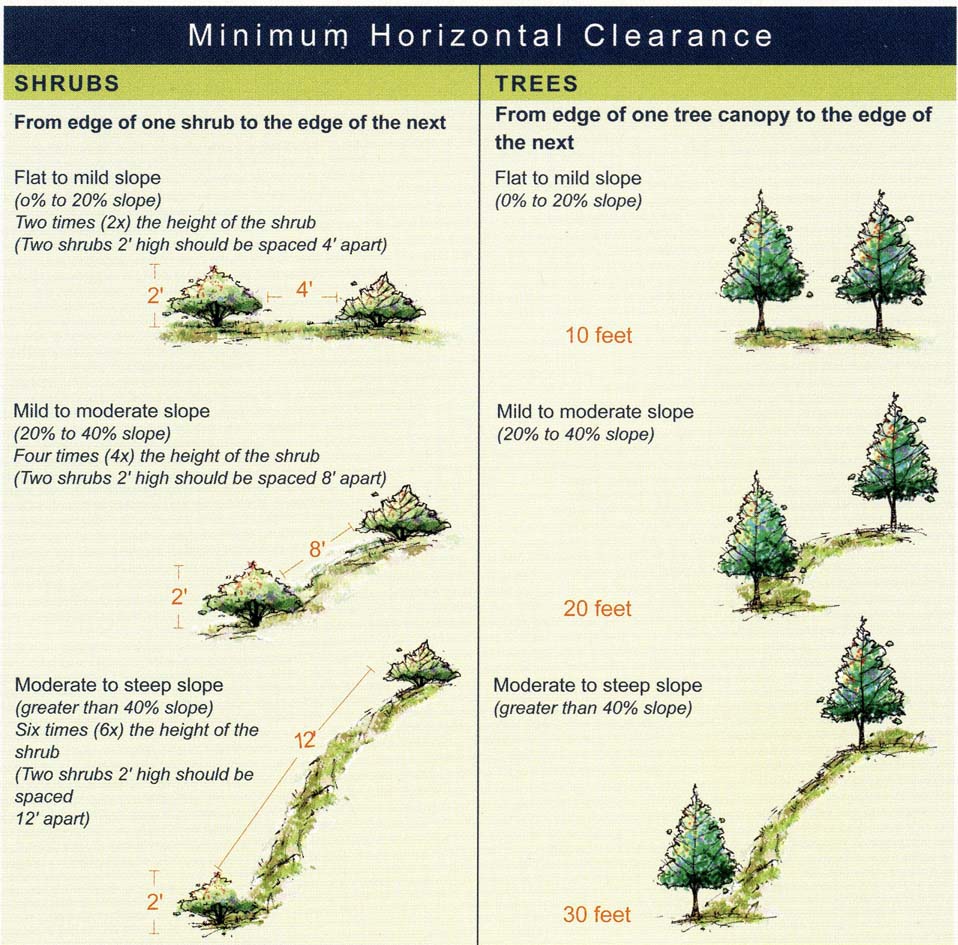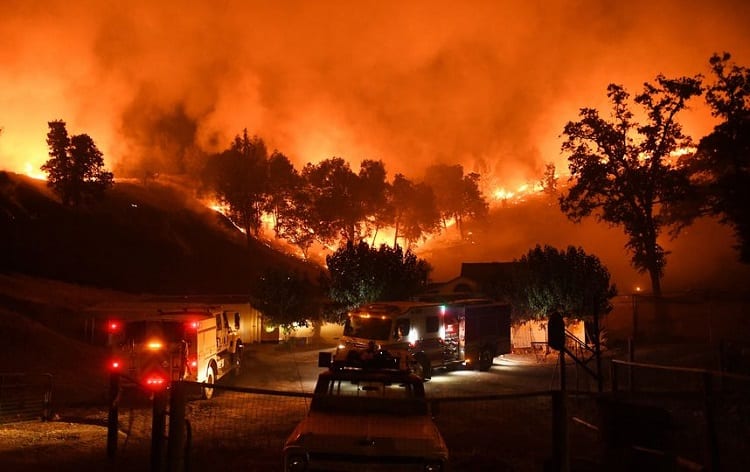Every year about this time, I write an article on the dangers of Wildland fires. My hope is that people pay attention to it and make their homes fire safe. However, every year I then go to homes where I know the owners have read my posts and see that they have made no real effort to make them fire safe. A common statement I hear is that the fire department says that I meet code.
That may be correct, in California that means you have a defensible space of 100 feet around your home. A hundred feet sounds like a lot, but remember, that this distance is based on the fire department responding with fire trucks and planes. If this equipment is not available, you have a much bigger problem. You need to prepare for a situation in which there is no fire department response.
I see people building retreats in remote areas without taking the terrain and fire load into consideration. Houses build on ridgelines and hills need larger firebreaks surrounding them. Remember heat rises and fires that are coming uphill will be faster and hotter. This causes more preheating. Current fire suppression methods have prevented fires in many areas for long periods of time. This causes a buildup of dead and highly flammable brush and debris. The way the government is cutting the fire service today it’s adding to the problem.
In a real TEOTWAWKI situation, many inexperienced people will flee to the mountains or country with wild expectations of living of the land. They will start fires by accident. And I can tell you from long years of experience that there will be individuals who will deliberately start fires. I live in country where wild fires regularly occurred and just assume that I will face one eventually.
Depending on where you reside some or all of these suggestions will probably apply. Most rural areas of the United States have at least a moderate potential for wildfires.
Ways to help protect your home.
First use ignition resistant construction as much as possible. This includes a fire resistant roof. Enclose the undersides of eaves, balconies and above ground decks with fire resistant materials. Exteriors should be of stucco, block, concrete or other nonflammable materials where possible.
Make sure that you have clear access routes to and from your house. Clear flammable materials at least ten feet from roadways and five from driveways.
If you live on a ridge, hill or edge of a canyon, the greatest fire danger will come from the low lying areas. Fire and heat always rises.
Your Yard
Remove dead leaves and needles from your roofs, gutters and around your home or out buildings. Cut back dead branches that overhang your home.
Keep your woodpile at least 30 feet from all structures. Locate LPG (propane) tanks at least 30 feet from structures. Maintain a good clearance around the tank. If possible, locate your propane tank downhill from your residence. If the tank leaks, propane is heavier than air and flows downhill like water.
A home within one mile of a natural wild area is at risk of flying embers. Wind-driven embers can start small fires in your yard, if you allow leaves, trash or other debris to accumulate. Small fires can rapidly turn into big ones. Remember a large fire can generate its own winds.
Defensible Space
In California, this consists of two parts, a 30-foot clear zone and a seventy foot reduced fuel zone for a total of 100 feet. All flammable vegetation, dead or dying plants should be removed from the clear zone.
In the reduced fuel zone, remove surface litter (leaves, needles, twigs, bark, cones etc.) so that it does not exceed a depth of three 3 inches. Remove dead trees, stumps and old logs. Grasses should not exceed four inches.
Depending on where you live, this may be an absolute minimum. Don’t think you are safe because you live in a subdivision. Near where I live they lost about 60 homes in one. A very fast moving wind driven grass fire hit the subdivision and the fire jumped from home to home.
The distances between brush and trees shown below are the minimum code requirements in my area. In a situation with no fire department response, they are inadequate. Check with your local fire department and see what they recommend and then increase the distance. You don’t want to set up that nice BOL and then lose it to someone else’s carelessness.




